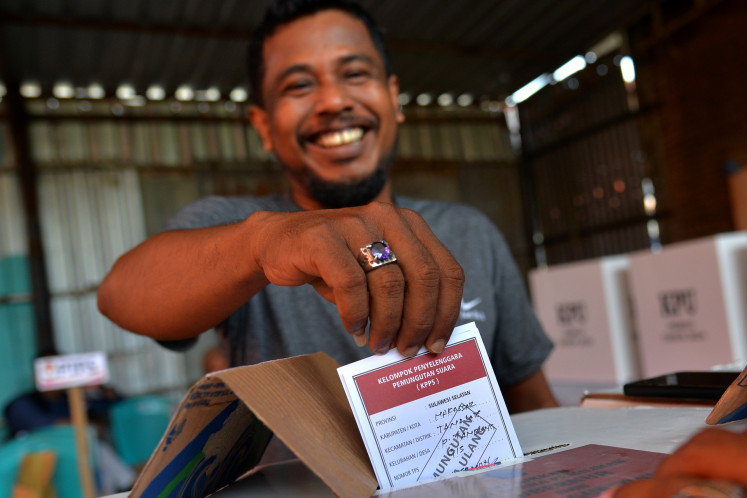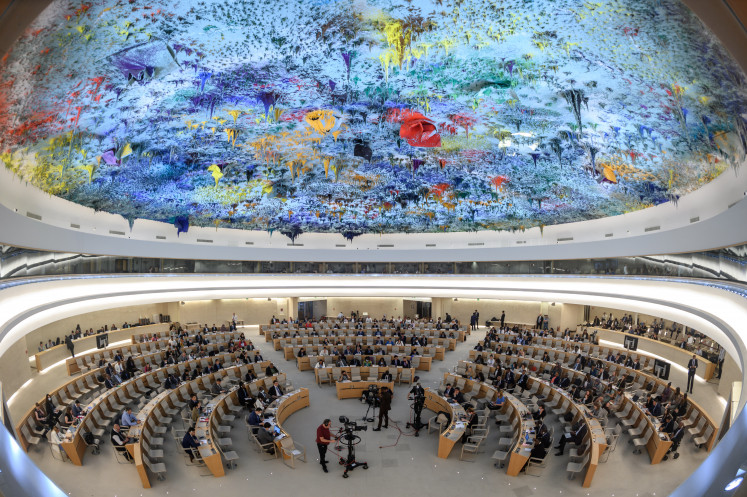Popular Reads
Top Results
Can't find what you're looking for?
View all search resultsPopular Reads
Top Results
Can't find what you're looking for?
View all search resultsMost Papua airports have no navigation systems
More than half of the total of 54 airports in Papua and West Papua are not yet equipped with adequate navigation systems and pilots rely on visual cues when flying in the area, a senior official has said
Change text size
Gift Premium Articles
to Anyone
M
ore than half of the total of 54 airports in Papua and West Papua are not yet equipped with adequate navigation systems and pilots rely on visual cues when flying in the area, a senior official has said.
The Transportation Ministry's navigation director Novie Riyanto said on Wednesday that pilots mostly relied on visual cues rather than navigation instruments when flying to remote airports in the east of the country.
The ministry is planning on installing and improving navigation instruments at all airports in Papua before the end of this year, he said.
'We will soon require all airports and aircraft operating in Papua to have adequate navigation systems and also to train and give licenses to all the pilots flying in the area to ensure safety,' he said.
The move was made following the crash of a Trigana Air Service plane that was flying from Papua's provincial capital, Jayapura, to Oksibil on Sunday.
The ATR42-300 twin turboprop plane was carrying 49 passengers and five crew members on a scheduled 42-minute journey. Five children, including two infants, were among the passengers.
Oksibil, which is 280 kilometers south of Jayapura, was experiencing heavy rain, strong winds and fog when the plane lost contact with the airport minutes before it was scheduled to land.
Novie said that the airport in Oksibil was already equipped with navigation systems, including VHF radio and a NDB-VOR navigation aid. However, he said that the airport was relying on a diesel generator to supply electricity, due to the island's power deficit.
'Sometimes the power at the airport is on and sometimes it's off, therefore pilots flying to the airport sometimes have to rely on visual cues only,' Novie said.
Novie said that in Papua only big airports were equipped with navigation systems, including Jayapura, Biak, Merauke, Sorong and Timika.
'In the future all pilots will have to depend on navigation instruments that will show the waypoint, wind direction and altitude, and not only rely on what they can see on the ground,' Novie said.
Much of Papua is covered with impenetrable jungle and mountains. Some planes that have crashed in the past have never been found.
Novie said, however, that experienced pilots were allowed to rely on visual cues.
'Papua has a special topography and extreme terrain. Therefore navigation instruments are very critical to direct aircraft flying in the area,' Novie said. 'Moreover, with navigation instruments, aircraft don't need to divert or return to base and continue to fly whenever the weather turns bad,' he continued.
On Tuesday, the bodies of all 54 people aboard the Trigana plane, the aircraft's black box and most of Rp 6.5 billion (US$470,000) in cash being carried on the plane were found in a forested area near Oksibil.










